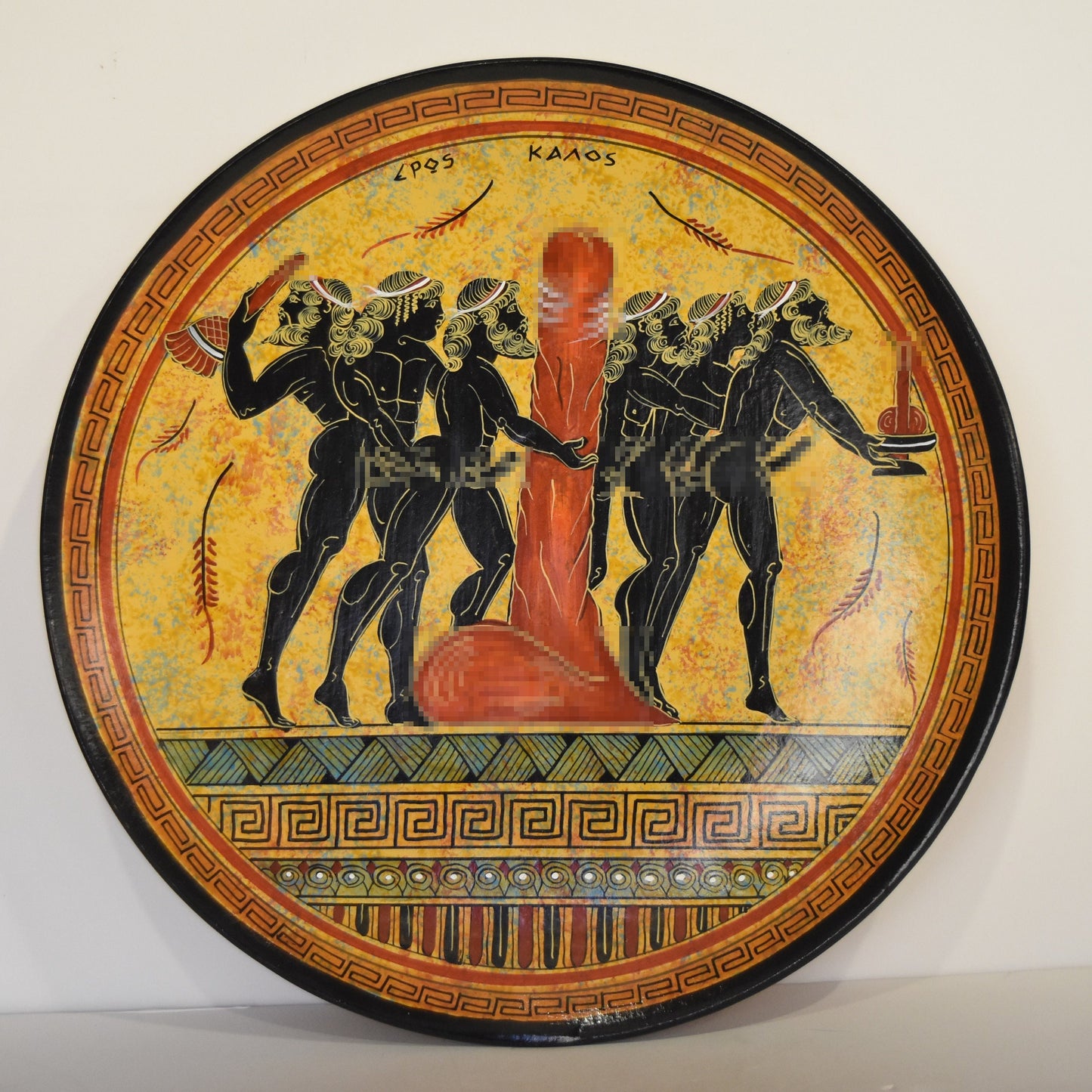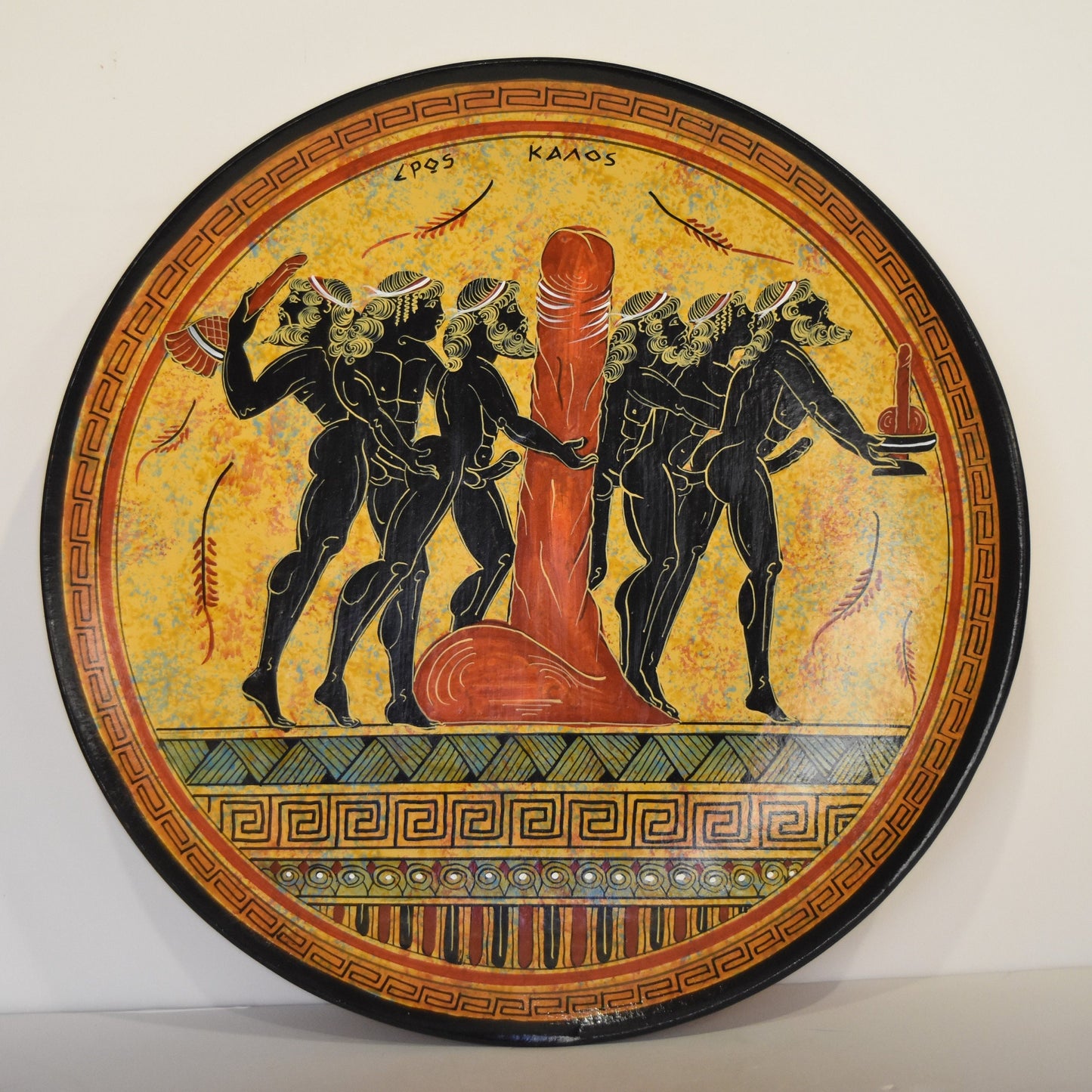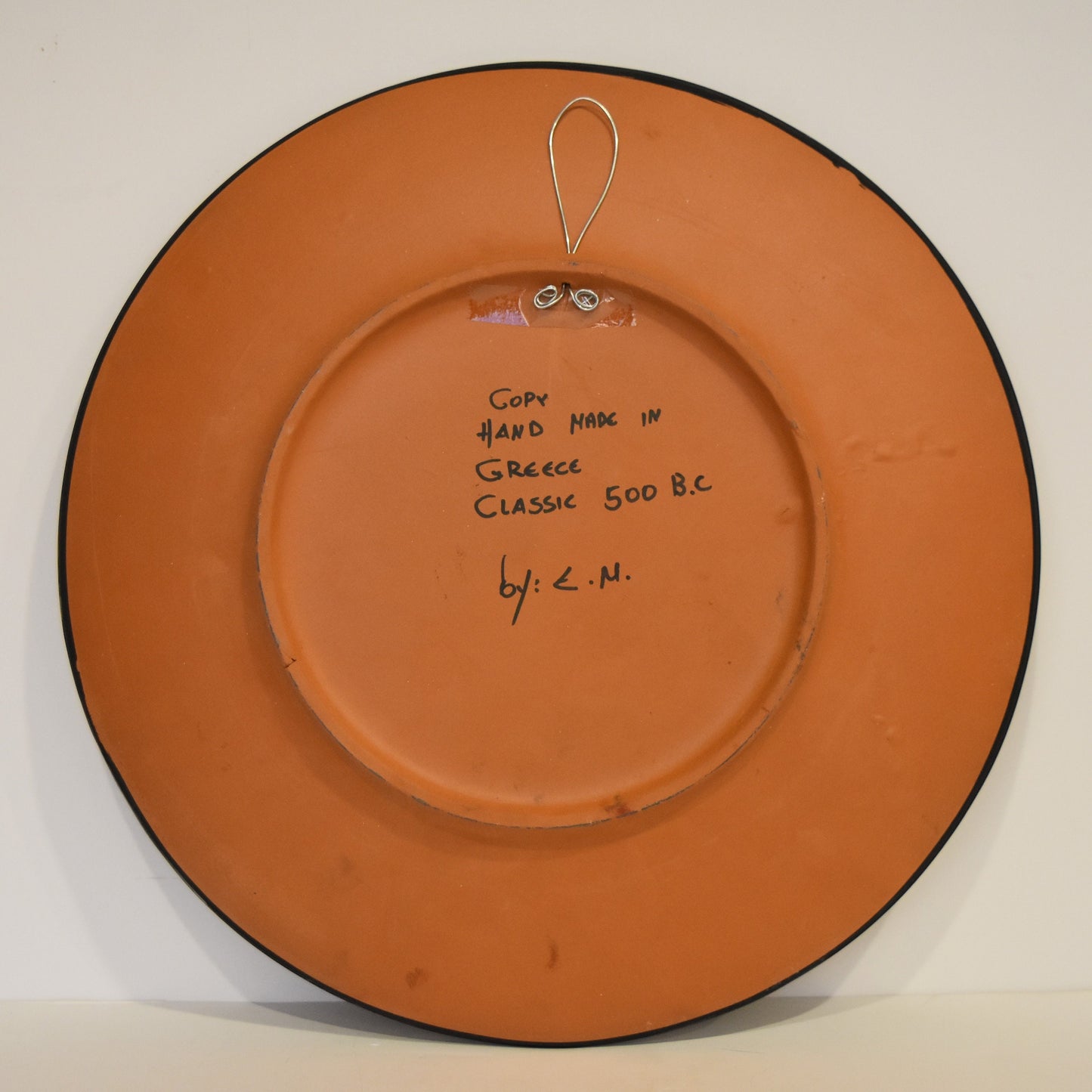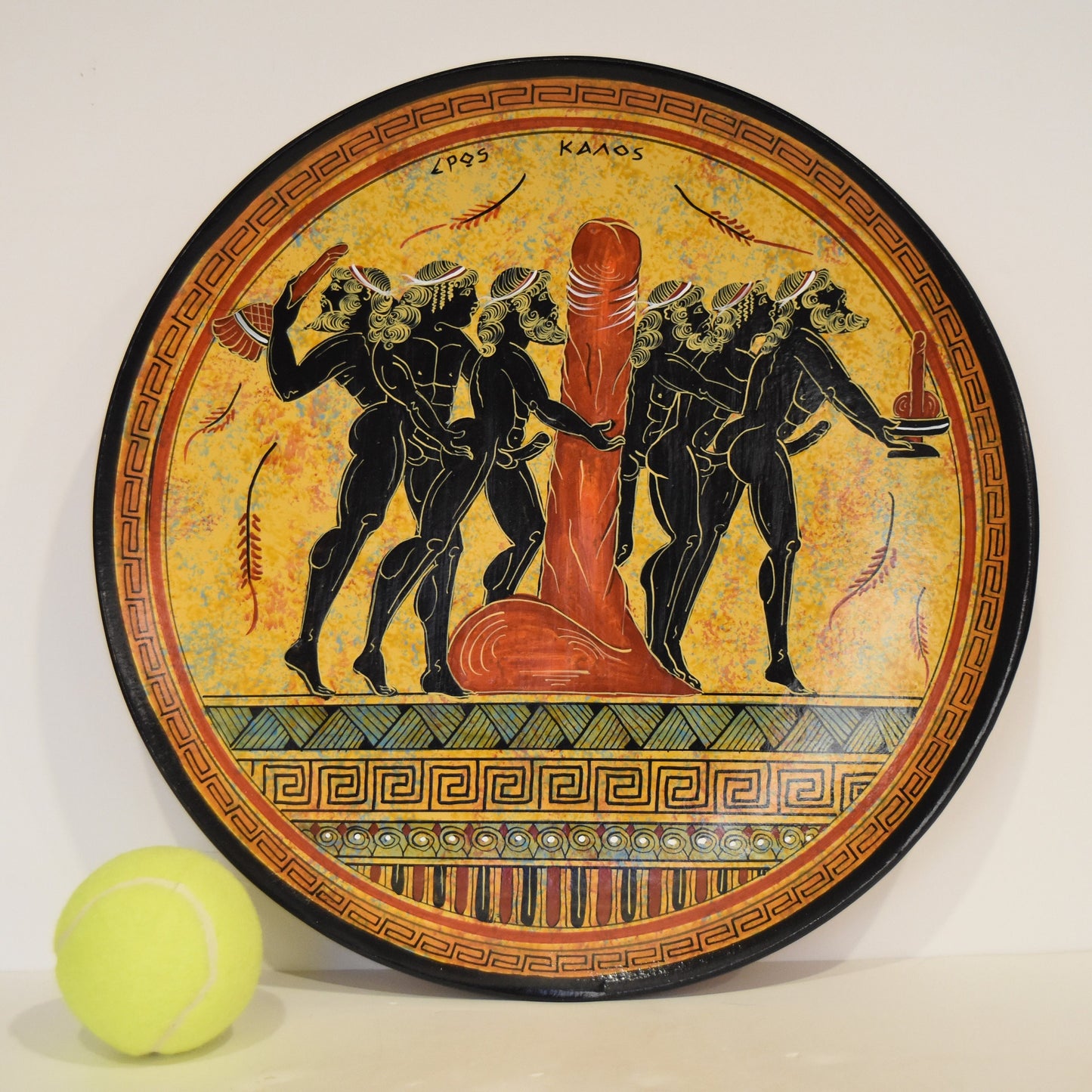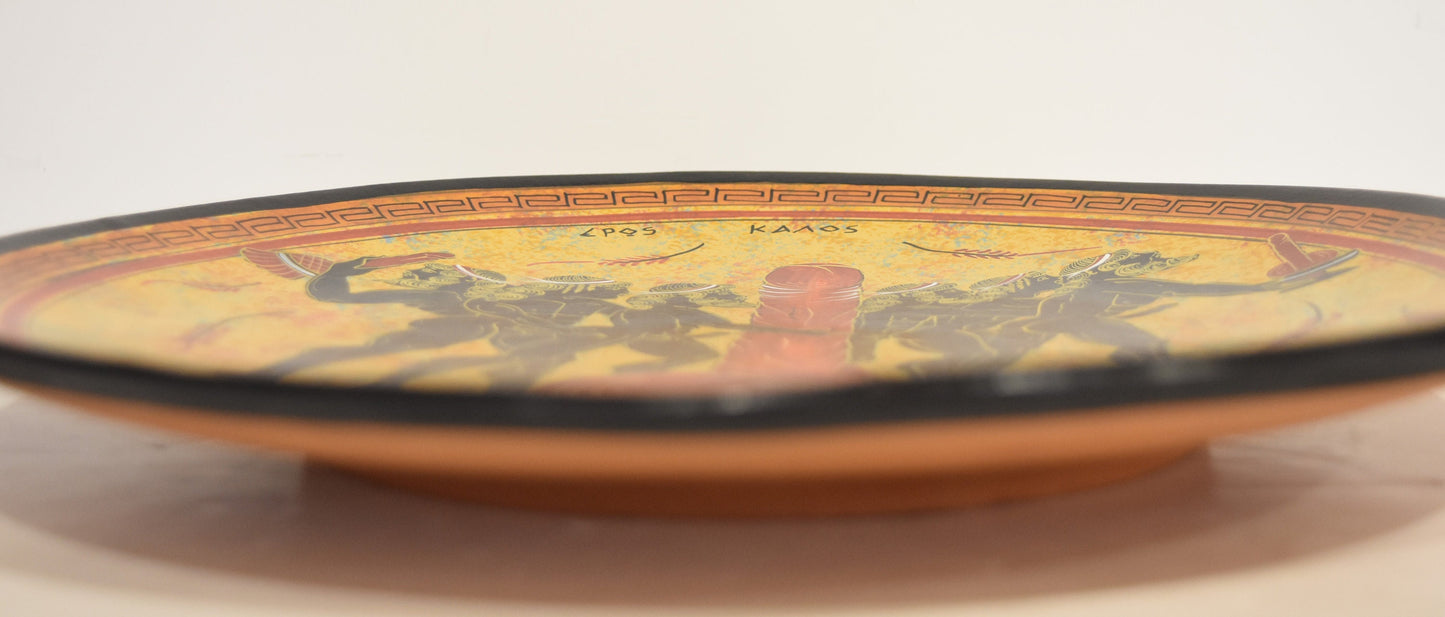Gallery Demeter
Homoerotic Scene between SixMales - Athens, 500 BC - Representation of Red Figure Vessel - Ceramic - Meander design - Handmade in Greece
Homoerotic Scene between SixMales - Athens, 500 BC - Representation of Red Figure Vessel - Ceramic - Meander design - Handmade in Greece
Regular price
€169,90 EUR
Regular price
Sale price
€169,90 EUR
Unit price
per
Tax included.
Shipping calculated at checkout.
Couldn't load pickup availability
Item Specifics
Condition: New, Handmade in Greece
Diameter: 32 cm - 12,6 inches
Weight: 1180 g
Material: clay, paint, ceramic, terracotta
Ancient Greek Erotic Scene, Athens, about 500 c.
In classical antiquity, writers such as Herodotus, Plato, Xenophon, Athenaeus and many others explored aspects of homosexuality in Greece. The most widespread and socially significant form of same-sex sexual relations in ancient Greece was between adult men and pubescent or adolescent boys, known as pederasty (marriages in Ancient Greece between men and women were also age structured, with men in their thirties commonly taking wives in their early teens).Though sexual relationships between adult men did exist, at least one member of each of these relationships flouted social conventions by assuming a passive sexual role. It is unclear how such relations between women were regarded in the general society, but examples do exist as far back as the time of Sappho.
The ancient Greeks did not conceive of sexual orientation as a social identifier as modern Western societies have done. Greek society did not distinguish sexual desire or behavior by the gender of the participants, but rather by the role that each participant played in the sex act, that of active penetrator or passive penetrated.This active/passive polarization corresponded with dominant and submissive social roles: the active (penetrative) role was associated with masculinity, higher social status, and adulthood, while the passive role was associated with femininity, lower social status, and youth.
